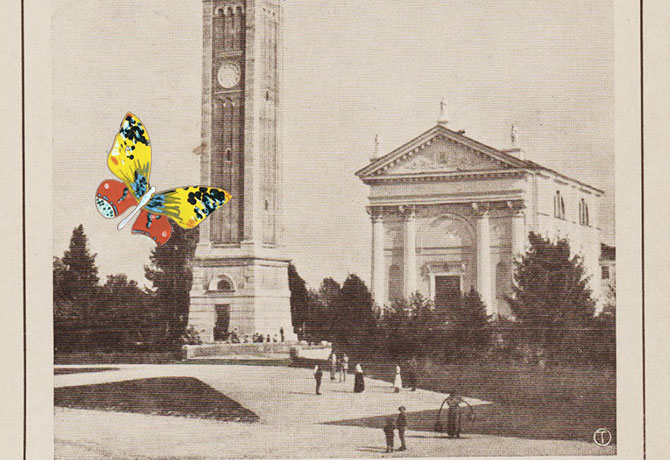On a fine balmy late spring afternoon, a Saturday towards the end of the Giro, you may find yourself in the piazza of Nove (36055), one of the Brenta towns in Veneto, downstream from Bassano del Grappa, and one known to pottery ‘afficionados’ for its artistic ceramics since over two centuries ago.
If you did not know this beforehand and had walked along the wide pathway from the far end of the street, opposite the museum of ceramics, you may have noticed a few artisanal shops, and particularly one containing bright coloured and entrepreneurially shaped ceramic art, created by Giuseppe Facchinello.
But maybe you came to Nove from direction of Rosa, over the Brenta at Cartigliano and on towards the town on your way to a chess game in Marostica, stopping at the traffic lights. Unsure what has been the attraction, you turn left and park. Opposite, you notice the Central Café with its tables in the street, and a few locals seated doing what Italians do. It is nearing six, close enough to justify a prosecco so you settle at a table and watch the world go by. You note that you had arrived at the centre of a large piazza yet Nove has no traditional piazza, but a large open space criss-crossed by two of the main provincial roads.
You greet and meet Giuseppe Facchinello, a fine artist though still a young man celebrating his birthday - Vente Nove – somehow appropriate.
Staring somewhat blankly as you sip your prosecco and nibble on a cracker, you note that the elegant street lights in the piazza consist of three poles each with a stack of coloured ceramic bowls in between the poles, and you conclude that Nove is or was a ceramic town.
You see an unusual jug in a shop window to your left, very ornate but with holes all over the body so it could not hold much liquid or be used to pour prosecco. Your quizzical look attracts a local who says just two word: ‘Bossa Buffona’.
None the wiser but intrigued you continue your scan, past a magnificent blue fir tree still in its adolescence but rising well over 15 metres above the pavement. You note also a restaurant built virtually to the edge of the opposite corner, still shuttered so missing the late afternoon trade.
On the diagonal corner, as a large milk truck navigates the crossing, there is a bank of Marostica. Behind it is a grand oak tree in its late Spring verdant finery with a cumulus cloud bank swelling above it and threatening the peacefulness and false security of the recently acquired bank.
And now your eyes are drawn to the right upwards further into the sky as you find, directly opposite your cafe, on the edge of the square, a magnificent bell-tower. It is six and it starts to peal – loudly. The two largest of the bells visible near the top seem to be in a state of uncertainty as they turn nearly fully inverted before slowly falling back down to launch another note.
As we pop another cork, Giuseppe tells of his grandfather who, as a young man, after one or two beers one evening, climbed outside the bell-tower and walked around the cupola without any support except the grace of God and sure feet. It is not recorded how he descended, but he did live to have another beer. We wait for the evening peal to decline enjoying unheard words and the prosecco.
To the right of the base of the bell-tower is an unusual building, half hidden behind the well-loved firs, what the English may refer to as a Masonic Temple, yet it is a smaller version and I leave its purpose unchallenged settling back to listen to the evening birds and the continual chatter of the natives.
Nine notes on Nove.






Follow us